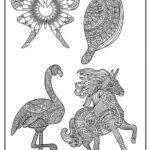In this digital age, when many of us have drowned in text messages and instant emails, creating a thank-you card is an exceptionally beautiful art of gratitude. From thanking the gift, kindness, hospitality, to all other ways of support, the heartfelt thankyou card stays long in the memory of the recipient. Its personal touch not only expresses your gratitude but also embodies much thought and effort in a manner that few other gestures can. Here, we are going to discuss step-by-step how you create the perfect thank-you card, from the selection of the appropriate materials to developing meaningful, personal messages.
Why Send a Thank You Card?
Gratitude is a very powerful emotion and expressing just such an emotion strengthens relationships, builds goodwill, and reaches deeper still in bonding. As life rushes by more than ever before, finding a moment to display gratitude via a thank-you card makes the message all the more worthwhile.
Verbal thanks or even digital messages are okay, but there is written on paper that says a lot more.
This thank-you card can be held in the hands of the recipient, and thus the expression of gratitude is much more real and true.
Much more personal: Handwritten thank-you cards are extremely personal. The effort to write and forward one is the real appreciation.
Keepsake: Thank you cards are kept as a keepsake, especially if they are written on with a great message or an interesting idea.
Professionalism: In business, sending a thank-you card after a meeting, collaboration, or partnership can instill professionalism in people and would make working relationships stronger.
A Step-by-Step Guide to Crafting the Perfect Thank-You Card
Step 1: Pick the Right Materials
The foundation of a good thank you card is in its physical makeup. Even before you begin writing anything on paper, it will start with picking up the right materials and design.
Card Stock
Thickness and Quality: Use high quality cardstock, so that the recipient can feel its substantial weight. The thicker the paper, with texture, the better, since then gives a better tactile impression of importance.
Colors and Themes: Colour, theme, and occasion or recipient have much to do with the type of cardstock, including weight, finish, and color to be used. Formal occasions are suited to white or cream-colored cards with gold embossing, while casual thanks for personal reasons use pastel colours or playful designs.
Envelope
Matching Envelope: Ensure that the envelope matches the card. A-mismatched or flimsy envelope can devalue the overall presentation.
Envelope Liner: Include a liner within the envelope in a complementary color or pattern to complete it with an additional touch of class.
Handwritten Addressing: You can also handwrite the recipient’s name and address in your letter as for personal feel, and a fountain pen or calligraphy can be used to add an extra touch of elegance.
Step 2: Personalizing the Card Design
Now that you’ve made your choice about medium, it’s time to think about the overall visual design of your card.
Homemade vs. Bought-at-the-Store
Homemade Cards: If you’re creative, a homemade free thank you ecards is a very poignant way to say thanks. Watercolors, collage, or simple doodling add a personal touch no bought card can.
Home-Made Cards: There is no need to get depressed if you do not have time or perhaps a creative stroke. You can buy card that suits your taste and the feeling you want to convey.
Letters or Initials: Add monogram in the letter or initials of the receiver or even your own. It gives it an expensive and bespoke look.
Foiling or Embossing: Add some class with foiling or embossed elements. These are very subtle yet striking effects to be added to the card, imbuing it with a more classy look and feel to be appropriate for adults.
Include a Theme: If you are thanking someone due to the celebration of something such as a marriage, birthday, etc., then include related themes in the card. Floral pattern is such a great example for a wedding thank you card that would go well with the setting of the wedding.
Writing a Heartfelt Message
A beautiful card means nothing if the message written inside is not heartfelt. A message is the place where you can pour out all the love in your heart and make the recipient feel appreciated. Below are some hints on how to write the perfect thank-you message.
- Personalization
Always personalize the message to reflect your relationship with the recipient and the specific act of kindness or support you are acknowledging. Never use general language.
Example: A “Thanks so much for the gift” could sound like this: “Thanks so much for this thoughtful coffee maker – it will sure brighten my mornings.”
- Acknowledge the Act
Be specific about why you are thankful. If it’s a favor, or hospitality, or support, or gift, say something about why you are thanking. Vague acknowledgment of gratitude typically yields little, whereas specific mention of details about how it affected you can make it more effectual.
Example: “Thank you so much for mentoring me for the last month. Your advice has shaped my professional journey thus far.”
- Share the Impact
Explain how the recipient’s action made you feel or how it might change your life. This is the part that touches on the emotional involvement in the message.
Example: “Your hospitality during my visit made me feel truly at home. I’ve returned with great memories, and a renewed sense of joy.”
- Warm and Future Contact
End the note on a positive, forward-looking basis. Express eagerness in again catching up with that recipient or resuming the connection.
Example: “I look forward to catching up soon and sharing many more wonderful moments together.”
- Original and Concise
While the message should be concise, it doesn’t have to be a long-winded essay. Sometimes, the most effective message is a short one, and it’s written from the heart.
Step 4: Writing Techniques and Calligraphy
As if elevating the message itself wasn’t enough, elevate it even higher with writing technique and style.
Handwritten vs. Printed
A written thank-you card carries an intrinsic value because it shows that one has taken some time off to write the thank-you note. As long as it’s personal, nobody should mind if your handwriting does not look like the finest calligraphy-surely not when you are writing from the heart.
Printed: If you are sending a large number of thank-you cards or wish to ensure legibility, a printed message may be the more sensible option. However, whenever possible, try including an informal signature or brief personal message.
Calligraphy and Lettering
If you have the talent, add calligraphy or specialized lettering to your card. You needn’t be a calligrapher to add some flair by experimenting with different handwriting styles (e.g., cursive, block letters). A fountain pen, brush pen, or fine-point marker are nice tools for this.
Step 5: Timely Delivery
Timing is everything in sending the thank-you card. It is never too late to thank someone, but the sooner you send the card, the more meaningful, even within a week or two of the actual event or action. In this manner, you will remind your recipient how fresh your appreciation is and how timely your thanks are.
Step 6: Special Features to Add Pizzazz to Your Thank You Card
For that little extra thoughtfulness, add details that make it special.
- Add a Picture or Memory Commemorating someone for attending a special occasion-awhether it’s a wedding, birthday, or reunion-the addition of a photo of the occasion adds another layer of meaning to this card and makes the note even more memorable. This little additional touch turns your letter of thanks into a treasure.
- Add a Little Gift
Small reminders of appreciation are great little gifts, nicely packaged and can even be small tokens of appreciation for very important events, such as thanking someone for a big favor or an important role that they have taken on in your life. A bookmark, sachet of tea, or pressed flower can prove a delightful surprise.
- Digital Enhancements
You can marry the traditional with the digital to develop something different because this is today’s tech-savvy world. For instance, you could put a QR code on the card, which links to your thank-you video or even a photo slide show that captured an event shared.
Conclusion: Gratitude in Every Fold
Making the perfect thank-you card is more than social obligation; it is an opportunity to deeply say thanks to people around you and to activate the relationships. Each fold of the card, each stroke of the pen, and each thoughtful word within it all can say much more to a heartfelt thanks more than just saying something at the moment of giving.
The world of instant digital communication means people have a meaningful, physical way to feel in touch with that person: a thankyou card. Send the next thank-you as a beautifully made, wonderfully crafted thank-you card and let your gratitude unfold in every detail.







